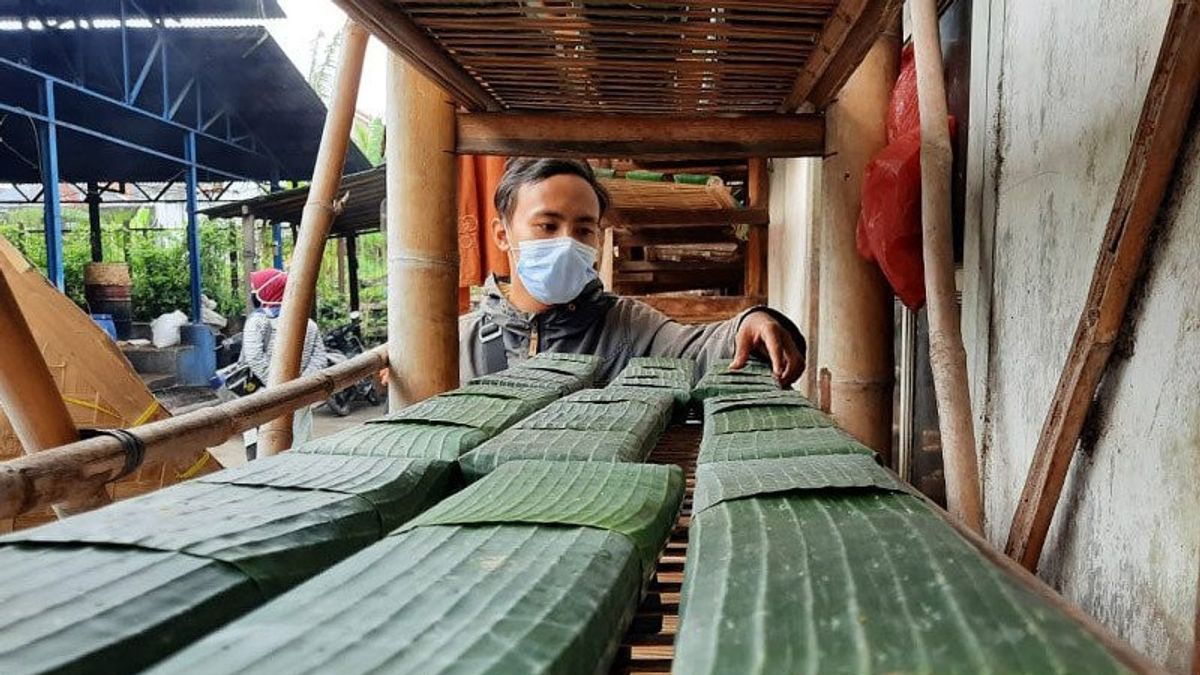JAKARTA - After a strike from February 21 to February 24, 2022, tofu and tempeh producers finally returned to production with a price increase of around 20 percent. The producers of tofu and tempeh hope that the government will fix the soybean trading system. Tempe producers strike in response to the increase in soybean prices from around Rp. 8000 per kilogram to Rp. 12 thousand per kilogram
From Trading Economics data, the world soybean price touched 16.4 US dollars per bushel, closer to last year's highest price of 16.61 US dollars per bushel, on May 12, 2021.
After cooking oil which experienced an increase and scarcity, followed by an increase in soybean prices which had an impact on the scarcity of tofu and tempeh. It is time for the government to make a food strategy to deal with change.

According to the Central Statistics Agency (BPS) 2019, the last few years the national soybean demand was 3.4-3.6 million tons per year. On the other hand, the highest soybean production capacity is only close to 1 million tons. Under these conditions, 2.4-2.6 million tons of imports are required every year.
In fact, in 2017 total soybean imports reached 2.67 million tons, valued at US$ 1.15 billion, of which 2.63 million tons came from the United States. This low soybean production capacity can be seen from BPS data in 2019, and in the last 5 years the highest soybean production in 2016 and 2017 was 859,653 tons and 538,728 tons, in 2018 it increased to 982,528 tons.
The high price of soybeans is considered an opportunity to develop protein sources that can also be easily reached by our society. Our country has a variety of animal and vegetable protein sources, ranging from chicken eggs, sea and land fish and local nuts. Besides being able to encourage local food consumption, it also provides other benefits, namely growing the rural economy.
Low Productivity of IndonesiaReporting from the UGM website, a lecturer at the Faculty of Agriculture and the UGM Graduate School, Subejo, responded to the phenomenon of soybeans which experienced repeated increases every year. He explained that soybean is a typical commodity that is very suitable to be developed in a country with four seasons and optimally developed in a tropical country like Indonesia.
The level of Indonesian soybean productivity is very far compared to productivity in America and Europe.
"With population growth that continues to increase, the demand for soybeans is also increasing, as a result, soybean imports cannot be avoided," he said.

According to Subejo, a breakthrough is needed to significantly suppress soybean imports and maintain price stability. A strategic program is needed through strengthening production innovation. "Innovation of breeding soybean seeds that are productive, adaptive to climate change and have a good taste image is very important," he explained.
One of the innovations produced by UGM that needs to be developed is the Mallika black soybean seed. According to him, the Mallika black soybean seed is quite prospective because it has high productivity, is adaptive to water shortages and is suitable for low and medium land.
It could also be through other UGM innovations related to increasing soybean productivity, namely Mikoriza. Through mycorrhizae can increase root exploration up to hundreds of times its volume so that the absorption of water and nutrients becomes better which makes soybean plants more fertile.
Koro BeansSo far, local soybean prices are not attractive to farmers, so soybean cultivation is not a priority due to high competition with more profitable agricultural commodities. The alternative is to cultivate soybeans by utilizing social forestry land and developing soybean substitute commodities.
As an agricultural observer, he proposed the innovation of developing various types of koro beans. Beans that have been initiated as a substitute for soybeans, however, the taste and uniqueness of processed tempe and tofu made from soybeans are seen as different from those made from substitute ingredients.
"The issue of changing consumer tastes and preferences is also not an easy thing," he said.
It will take time to change people's tastes, by developing non-soybean tofu and tempeh by developing food technology, but if we want to continue consuming tofu and tempeh, the government must consistently produce local soybean varieties with high productivity.
The English, Chinese, Japanese, Arabic, and French versions are automatically generated by the AI. So there may still be inaccuracies in translating, please always see Indonesian as our main language. (system supported by DigitalSiber.id)









